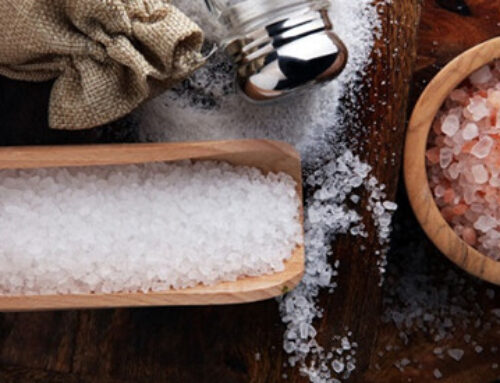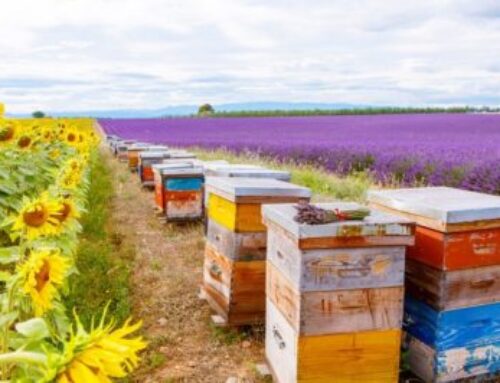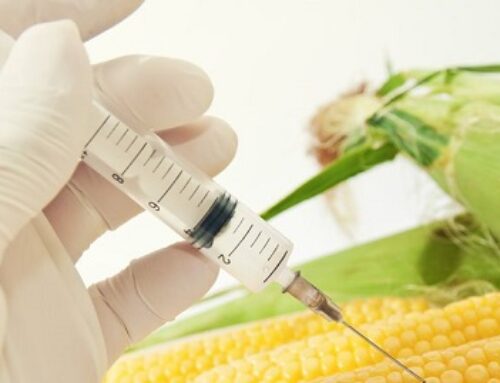In this article, I uncover the chemical burden of using pesticides and how to avoid ingesting these toxic chemicals.
Humans. We are beautifully designed biological creatures, along with all the biological creatures of this world. But, for the first time in history, we have a really big problem: manufactured chemicals. Chemicals are an inextricable part of our world and environment now. And now, all of us are swimming in the same soup. All of these chemicals are toxic to our biology and have no place in our environment or in our bodies. But the chemical industry is arguably bigger than any industry that can be managed responsibly. Powerful and rich enough to be able to influence the law makers and the laws that are supposed to protect us from the dangers most of these chemicals pose to our health and to the future of our planet. Considering the total global revenue for the chemical industry in 2016 was 5.2 trillion U.S. dollars, it is an industry that will do almost anything to protect its ability to manufacture and sell its products unhindered (1). This includes telling a few white lies about the safety of their products, buying off politicians through campaign donations and other trickery. It’s a very successful business model indeed.
Our economy is tied to manufactured chemicals for just about everything. By far the vast majority of the food grown on this planet is with the assistance of many different kinds of chemicals, almost all of which are incredibly destructive to the environment and compromise the health of our bodies. Chemicals are used in the production of building materials, the production of furnishings for our homes, the clothes we wear, the cosmetics we put on our skin, in plastics used for almost every modern convenience. But the one chemical I am most concerned about is used in exceedingly high levels in the farming of our foods and is omnipresent in our environment today. That chemical is called glyphosate, the main ingredient in the herbicide known as Roundup.
Roundup has been used since the early 1970s as a potent weed killer. It has made the arduous farm chore of weeding much easier. Removing weeds that compete with food crops increases the crop yield, increasing the farmer’s income. It is easy to see why a chemical herbicide like Roundup became an instant success once it became available on the market. Fast forward 20 years and now we have bioengineered crops like corn, soy, and cotton, which have all been genetically modified to be resistant to Roundup. This was one of the great ideas of the modern day: you can drench everything on the field with herbicide, including the crops, and Roundup will kill only the competing weeds. Since the introduction of GMO crops, use of glyphosate has increased by 500 percent (2). The end result is that our food is contaminated, now more heavily than ever, with glyphosate. And we eat it…lots of it. About 75% of the food on the shelves in the grocery store contain ingredients from the crops that are resistant to glyphosate. This means they have been sprayed more heavily and you are ingesting traces of glyphosate in every bite. Once our main food crops like corn and soy were genetically altered to tolerate glyphosate, the amount of weed killer applied to crops increased tremendously.
Unfortunately, these main food crops take up about half of the farm land in this country. Environmental Protection Agency data shows that the amount of glyphosate used on crops in 2007 (about 185 million pounds) almost doubled what was used in 2001. The amount continues to go up. The estimated amount of Roundup that has been applied to our soil since the introduction of the chemical in 1974 is more than 1.8 million tons in the U.S. alone; worldwide that amount increases to 9.4 million tons which have been sprayed onto the soil of our planet (3). This is truly hard to fathom!
It is worthwhile to understand how this chemical works to kill plants and degrade life in general (with the exception of the genetically engineered crops). Glyphosate is a chelator—it binds up minerals in the soil that are essential for plant growth and development so they are not available to the plant. Essential minerals like manganese, selenium, and zinc. This weakens the plants and makes them susceptible to disease. It destroys the plants’ immune system. Then pathogenic microbes, funguses and viruses are able to kill the plants because they have no immunity to protect themselves.
The manufacturer of Roundup, Monsanto, has claimed the use of their product is completely safe and not harmful to the environment, insect or animal, and that the chemicals break down in the environment quickly. But, people are starting to take notice that it is not so benign. Argentina, thanks to Roundup, is now the third largest producer of soy beans in the world. But between 2005 and 2009, cancerous tumors were double the national average in areas where GMO crops were grown and glyphosate was used (4).
Since the release of glyphosate onto the market and consequently into the environment, and with numerous published studies, we know that glyphosate is not as harmless as once supposed. The World Health Organization (WHO) last year stated that glyphosate is a probable human carcinogen. This is a pretty big deal for the WHO to come forward and make this statement, especially since the WHO has been known to protect corporate interests (5).
Not only do we have the burden of this chemical contaminating the whole planet, finding it in our air, water, soil and food, but most troubling is that it is found in our bodies. Glyphosate has been found in the urine, breast milk and blood of people all over the world. It is a powerful endocrine disruptor, causing chronic health issues that unfold slowly over time, and causing silent inflammation that eventually reveals itself as disease. Studies show increases in glyphosate use that coincides with increases in autism, ADHD, autoimmune diseases of all types, cancer, birth defects, inflammatory bowel disease (especially in children), and damage to DNA and chromosomes, not to mention serious food allergies including celiac disease, neurological diseases like Parkinson’s and multiple sclerosis, Alzheimer’s, asthma, obesity, liver problems, reproductive issues, disrupted ability to detoxify, and on it goes (6). This is not good! There are hundreds of studies that show the dangers of glyphosate. If I cannot convince you of the dangers of this ubiquitous chemical, you only need Google it and read a few articles to be convinced.
Initially, a big sales pitch to farmers of GMO seed was the reduced requirement and use of weed spray; but, because Roundup-resistant corn, soy and cotton can tolerate glyphosate, more is being applied to our crops than ever before. And, just like bacteria can develop a resistance to antibiotics, so can weeds develop a tolerance to glyphosate. This is showing up as new strains of super weeds that Roundup cannot kill. The result of these spray resistant weeds are new second generation herbicides being developed and marketed to our farmers. I think anyone can see there is no end to this disaster. What do we do when these new, more dangerous sprays create even more spray resistant weeds? Eventually we will hit a dead end.
I cannot write this article and not mention the unfolding environmental disaster this chemical has caused with the collapse of the beautiful monarch butterfly (down about 90% in 20 years) and other species of butterflies (7). The monarch depends on milkweed for sustenance and to lay its eggs. Milkweed used to grow along the road banks and at the sides of fields where crops grew. Across the U.S. now, common roadside weeds including milkweed are sprayed and the monarch butterfly and other pollinators do not have the food needed to keep their species alive. This is hard for me to grasp but we very well may lose our monarchs and other butterflies along with our bees.
If the butterfly is the canary in the coal mine for us, then we are in trouble. The idea that a few very rich and powerful chemical corporations can cause such an incredible amount of environmental damage, cause the degradation of the health of human beings, and make trillions of dollars doing it is hard to grasp. It looks a lot like total corruption! But we must assume some responsibility ourselves—our complacency allows powerful corporations to get away with it. How can we turn this story around? How do we stay healthy in a world that is so chemically dirty that it is becoming inhospitable to the life that lives here?
I was teaching an environmental toxin class one day and a woman in that class asked if I felt hopelessness or empowered knowing what I had just taught. It was a really good question. I did feel pretty hopeless when I first started to learn about the presence of the many chemical in our environment, but to be empowered you have to know the facts, even if you need to go through a period of feeling hopeless to reach the point of feeling empowered. We need to understand how to navigate our current world with new pitfalls and we need to take the time to learn and educate ourselves. Having access to information is needed to make sound decisions. We can take that information and make it work for us by making our dollars speak louder than commercial interest.
When we support our local organic farmers by buying their produce, we are giving them an opportunity to make a living that is supportive of our environment and we are making healthy food choices that support our health and a healthy, sustainable environment. Though not all farms may be certified organic, many are using organic practices but not able to promote their products as organic because the cost of certification is too high. Just ask your farmer if they are using organic farming practices. Small, local farms offer us something not always offered at the supermarket: the chance to buy nutrient-dense produce grown in rich soil, high in microbial activity that increase the vitamin and mineral levels of the crops. You will get produce that tastes delicious, free from dangerous chemical residues that don’t wash off. Foods grown on industrial farms in depleted soil, fertilized with chemicals that make produce look good but taste bland, are low in nutrient value because chemical fertilizers do not increase nutrient levels, only yields.
I realize not everyone has access to local, organically grown food, but most of us can find many organic options at the grocer, including Costco. Taking packaged and processed foods out of the diet will limit your ingestion of foods that are made with GMO ingredients (remember, GMOs usually have much more glyphosate applied to them than non-GMO foods). This is one way to let your dollars speak for you. You may pay a bit more for healthier, cleaner produce initially, but you will save more money down the road with less health care costs, fewer sick days and less productivity loss due to sickness and visits to the doctor.
Organic, organic, organic!!
It is sad to realize that we have all been exposed to this insidious chemical, but there are steps we can take to limit and even eliminate most of this herbicide from our body. The simplest step is to eliminate the foods from your diet that are genetically modified or have GMO ingredients, which means you will need to purchase fruits, vegetables and meats that are organic. Though organic does not always guarantee your food is completely free of glyphosate residues or GMOs, it will assure you any levels that might be in your food will be much lower than foods that are conventionally raised. With this simple first step, your body will be allowed to start its natural process of eliminating toxins. When you replace your unhealthy GMO-dominated diet with whole organic foods, many of these foods will facilitate the removal of toxins from the body because they are loaded with the nutrient co-factors that assist in this natural process. Working to make sure your gallbladder is in top shape is also important since that river of bile is how most toxins are eliminated from the body; and take good care of your liver, since it makes your bile (see my article: Bitters and Bile). By cutting out processed foods, you are enhancing your liver’s ability to detox your body. Stay hydrated so detoxing is facilitated, and finally, consider spending time in a far infrared sauna, which will help you sweat and release toxins from your body.
In good health,
Cited References:
- Statista. Total revenue of the global chemical industry from 2002 to 2016 (in billion U.S. dollars). Statista Web Site. 2017. Available here.
- Galindo Y. Exposure to glyphosate, chemical found in weed killers, increased over 23 years. UC San Diego Health Newsroom. Oct 24, 2017. Available here.
- Main, D. Glyphosate now the most-used agricultural chemical ever. Newsweek. Feb 2, 2016. Available here.
- Mares, J. Glyphosphate: the herbicide you’re eating that ‘probably’ causes cancer. Paleohacks Web Site. 2017. Available here.
- Wylie, I. Glyphosate is a ‘probably carcinogenic’ herbicide. Why do cities still use it? The Guardian. Apr 21, 2015. Available here.
- Kumar S, Khodoun M, Kettleson EM, McKnight C, Reponen T, Grinshpun SA, Adhikari A. Glyphosphate-rich air samples induce IL-33, TSLP and generate IL-13 dependent airway inflammation. Toxicology. Nov 5 2014;325:42-51. Available here.
- EcoWatch. Monsanto’s roundup ready crop system puts monarch butterflies at brink of extinction. EcoWatch. Feb 5, 2015. Available here.
Additional Resources:
- Scientific American. Why Are Trace Chemicals Showing Up in Umbilical Cord Blood. Scientific American. 2017. Available here.
- Benachour, N. and Séralini, G. Glyphosate Formulations Induce Apoptosis and Necrosis in Human Umbilical, Embryonic, and Placental Cells. Organic Consumers Association. Dec 23, 2008.
- Barrett, M. 3 Studies Proving Toxic Glyphosate Found in Urine, Blood, and Even Breast Milk. Natural Society. May 4, 2014. Available here.










